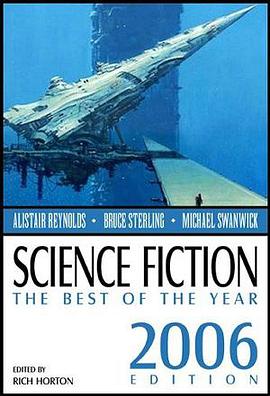
The World Economy: Resources, Location, Trade, and Development, now in its fourth edition, offers a overview of the field of economic geography and its linkages to related issues of development and underdevelopment, international business, and the global economy. In an age of increasing globalization, an understanding of these issues is central to both liberal arts and professional educations, for the concerned voter to the engaged business practitioner. This work is designed as a comprehensive introduction to the ways in which economic activity is stretched over the space of the earth's surface. Economists too rarely take the spatial dimension seriously, a perspective that implies all economic activity occurs on the head of a pin. Geographers, in contrast, are interested in the manner in which social relations and activities occur unevenly over space, the ways in which local places and the global economy are intertwined, and the difference that location makes to how economic activity is organized. No social process occurs in exactly the same way in different places; thus, where and when economic activity occurs has a profound influence on how it occurs. Space, then, can no longer be relegated to the sidelines. As globalization has made small differences among places increasingly important, space has become more, not less, important. This new edition differs from the previous one in several respects. It has updated empirical data found throughout. Some traditional material has been trimmed to avoid making the volume overly long. In keeping with the disciplines growing concern for political and cultural issues, which recognizes that the economy cannot be treated separately from other domains of social activity, this volume offers more emphasis on the historical context and political economy of capitalism, including class and gender relations. Throughout, it synthesizes diverse perspectives ranging from mainstream location theory to post-structuralism to reveal capitalism as a profoundly complex, important, and fascinating set of social and spatial relations. Additions to the third edition include a new chapter on the historical development of capitalism from its feudal origins through colonialism and the industrial revolution. Like all social sciences, geography has become increasingly self-conscious about how it interprets and understands the world, that is, theory. Accordingly, this edition also collects the various aspects concerned with conceptual and theoretical matters and unites them. Thus, it explores issues ranging from the locational determinants of firms to the role of the state in shaping market economies. Additionally, it offers much more discussion about services, including the multiple reasons for the growth of the service economy, its labor market impacts, and the fundamental role played by telecommunications in the global services economy. Finally, it approaches international development in an intellectually critical manner, emphasizing multiple theoretical views concerned with the origins and operations of the global economy. Some students wrongly assume that economic geography is dominated by dry, dusty collections of facts and maps devoid of interpretation. This volume aims to show them wrong. Others are intimidated by economics, equating it with abstract and difficult supply and demand diagrams and mathematical equations. While this book uses both maps and some diagrams to make various points, it does not presume that the Student has an extensive background in economics. There are several forms of economics, including neoclassical views and political economy. The volume at hand uses both of these and other perspectives as well, in an attempt to raise the readers understanding to a level above that of the lay public but not to the degree of sophistication expected of an expert. In doing so, the book hopes to show that economic geography offers insights that make the world more meaningful and interesting; it is simultaneously an academic exercise, in the sense that it sheds light on how and why the world is structured in some ways and not others, and a very practical one, i.e., as a useful narrative for those studying business, trade, finance, planning, and other applied fields. Pedagogically, the volume employs diverse strategies to divulge how capitalism structures, changes, and shapes peoples lives in complex ways. The new edition has fewer tables than the third, but more photos, trying to forge linkages between abstract concepts and the real world of everyday experience. Each chapter includes a summary, key terms, study questions, suggested readings, and useful websites for those curious enough, brave enough, and energetic enough to explore further. We are grateful to many people who helped us in this endeavor. Numerous colleagues in the discipline of geography, within our departments and throughout North America and Europe, have inspired us in many ways, often without knowing it! Dan Kaveney of Prentice Hall brought the authors together, cajoled and guided them, and oversaw the review process. Patty Donovan meticulously edited every chapter, clarifying points and polishing the writing. The photo researcher, Diane Austin, did a wonderful job selecting pictures. James Rubenstein, author of The Cultural Landscape An Introduction to Cultural Geography, graciously allowed us to purloin much of his wonderful artwork, and we owe him a real debt of gratitude. Finally, we thank our friends and families, who put up with us in our grouchier moments as we struggled with the text. For Santa and Derek. align="right"> [rederick Stutz Dept. of Geography San Diego State University Barney Warf Dept. of Geography Florida State University Tallahassee </UL>
具体描述
读后感
评分
评分
评分
评分
用户评价
数据有些过时了。。。读起来还行,挺简单的。
评分数据有些过时了。。。读起来还行,挺简单的。
评分数据有些过时了。。。读起来还行,挺简单的。
评分数据有些过时了。。。读起来还行,挺简单的。
评分数据有些过时了。。。读起来还行,挺简单的。
相关图书
本站所有内容均为互联网搜索引擎提供的公开搜索信息,本站不存储任何数据与内容,任何内容与数据均与本站无关,如有需要请联系相关搜索引擎包括但不限于百度,google,bing,sogou 等
© 2025 qciss.net All Rights Reserved. 小哈图书下载中心 版权所有





















